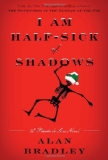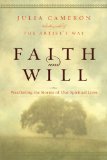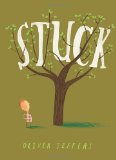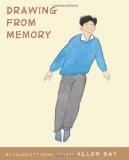Review of The Gifts of Imperfection, by Brene Brown
Let Go of Who You Think You’re Supposed to Be and Embrace Who You Are
Your Guide to a Wholehearted Life
by Brene Brown, PhD, LMSW
Hazelden, 2010. 135 pages.
Starred Review
2011 Sonderbooks Stand-out: #2 Other Nonfiction
This is a lovely inspirational book, especially for people like me who are learning to outgrow perfectionism. It’s a book about owning our own stories and loving ourselves, even though we are imperfect. I savored it slowly, and lots of quotes from the book ended up on Sonderquotes, because they really spoke to me and the life I want to live.
The author was doing studies on negative emotions like shame, fear and vulnerability. As she was studying shame resilience, she noticed patterns in people who live wholehearted lives.
“I heard stories about the power of embracing imperfection and vulnerability. I learned about the inextricable connection between joy and gratitude, and how things that I take for granted, like rest and play, are as vital to our health as nutrition and exercise. These research participants trusted themselves, and they talked about authenticity and love and belonging in a way that was completely new to me.”
This book covers what she found, in nice, practical tips. It’s a personal book, because she tried to put the principles she learned into her own life and family. After she did, she says:
“I was healthier, more joyful, and more grateful than I had ever felt. I felt calmer and grounded, and significantly less anxious. I had rekindled my creative life, reconnected with my family and friends in a new way, and most important, felt truly comfortable in my own skin for the first time in my life.”
She explains Wholehearted living in the first paragraph of the main text:
“Wholehearted living is about engaging in our lives from a place of worthiness. It means cultivating the courage, compassion, and connection to wake up in the morning and think, No matter what gets done and how much is left undone, I am enough. It’s going to bed at night thinking, Yes, I am imperfect and vulnerable and sometimes afraid, but that doesn’t change the truth that I am also brave and worthy of love and belonging.”
There is lots and lots of good stuff in this book. Here’s a section I particularly liked:
“Love and belonging are essential to the human experience. As I conducted my interviews, I realized that only one thing separated the men and women who felt a deep sense of love and belonging from the people who seem to be struggling for it. That one thing is the belief in their worthiness. It’s as simple and complicated as this: If we want to fully experience love and belonging, we must believe that we are worthy of love and belonging.
“When we can let go of what other people think and own our story, we gain access to our worthiness — the feeling that we are enough just as we are and that we are worthy of love and belonging. When we spend a lifetime trying to distance ourselves from the parts of our lives that don’t fit with who we think we’re supposed to be, we stand outside of our story and hustle for our worthiness by constantly performing, perfecting, pleasing, and proving. Our sense of worthiness — that critically important piece that gives us access to love and belonging — lives inside of our story.”
At the start of the book, the author talks about the concepts of love and belonging, and what she learned when she researched shame, which we all have. Then she goes on to chapters that cover Guideposts of Wholehearted Living, complete with ideas for cultivating them and building them into our lives. These Guideposts are:
1. Cultivating Authenticity: Letting Go of What People Think
2. Cultivating Self-Compassion: Letting Go of Perfectionism
3. Cultivating a Resilient Spirit: Letting Go of Numbing and Powerlessness
4. Cultivating Gratitude and Joy: Letting Go of Scarcity and Fear of the Dark
5. Cultivating Intuition and Trusting Faith: Letting Go of the Need for Certainty
6. Cultivating Creativity: Letting Go of Comparison
7. Cultivating Play and Rest: Letting Go of Exhaustion as a Status Symbol and Productivity as Self-Worth
8. Cultivating Calm and Stillness: Letting Go of Anxiety as a Lifestyle
9. Cultivating Meaningful Work: Letting Go of Self-Doubt and “Supposed To”
10. Cultivating Laughter, Song, and Dance: Letting Go of Being Cool and “Always in Control”
If this sounds as lovely to you as it did to me, I promise that you will find inspiring and helpful words in this book.
Find this review on Sonderbooks at: www.sonderbooks.com/Nonfiction/gifts_of_imperfection.html
Disclosure: I am an Amazon Affiliate, and will earn a small percentage if you order a book on Amazon after clicking through from my site.
Source: This review is based on a library book from the Fairfax County Public Library.









